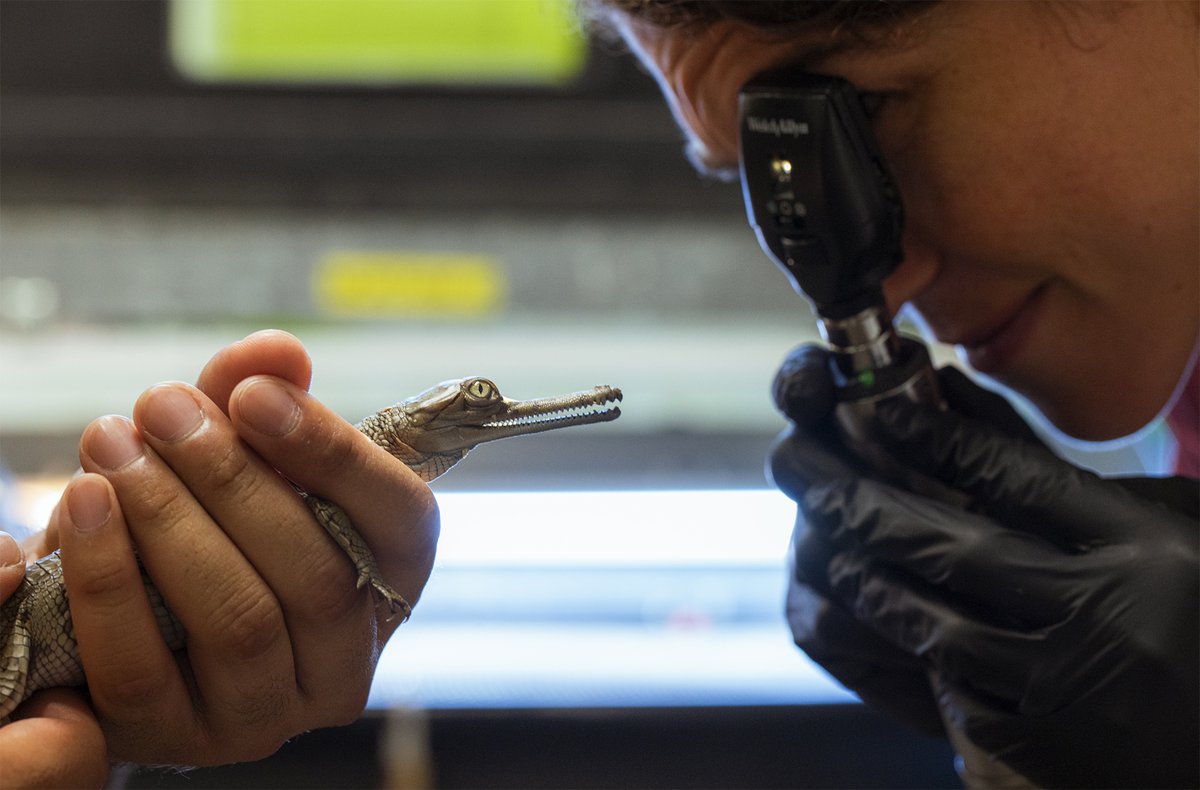At the Fort Worth Zoo, conservation isn’t just a buzzword — it’s a birthright. And this summer, for the third year running, that legacy came swaddled in scales and teeth.
Two critically endangered gharial crocodiles broke through their eggshells in early June, marking a milestone never before achieved in North America: three straight years of successful gharial hatchings. It’s the kind of victory that would be cause for celebration on its own — but it also signals something deeper: a rhythm, a pattern, a rare momentum that conservationists across the globe have struggled to find.
The achievement is no accident. It’s the result of nearly 15 years of dedicated effort — trial and error, design innovations, and daily attention — all focused on one ancient species with a peculiar snout and a perilous future.
No other zoo in North America has pulled this off once, let alone three years running — making Fort Worth’s gharial program a global standout in the fight to save the species.
Gharials, one of the largest crocodilian species on the planet, are unmistakable: sleek-bodied, sharp-toothed, and capped with a needle-nosed grin tailor-made for fishing. They spend most of their lives submerged in river water and are master swimmers — but they’re poor walkers on land, which has made survival in a world of disappearing riverbanks and dammed waterways increasingly difficult. Habitat destruction, pollution, and the fragmentation of India’s river systems have landed the gharial on the International Union for Conservation of Nature’s (IUCN) critically endangered list, with fewer than a thousand believed to remain in the wild.
This summer’s two hatchlings emerged on June 5 and June 11 from eggs laid by a female whose genes had not yet been represented in previous offspring, helping to further diversify the species’ managed gene pool. Though they measure just over a foot long now, the hatchlings will eventually grow into fearsome fish hunters. Females can reach 10 to 14 feet; males stretch out even longer, up to 16 feet, and tip the scales at nearly 1,500 pounds.
The gharial habitat itself — part of the Zoo’s Museum of Living Art — was specifically designed in 2010 with breeding in mind. Heated sands replicate nesting beaches. Sloped access to water mimics the gradual incline of natural riverbanks. Even the water temperature is finely regulated to reflect the gharial’s native rivers. It’s a habitat that whispers to instinct, allowing nature to do the rest.
For now, the new hatchlings will remain behind the scenes, joining their 2023 and 2024 siblings for close monitoring. Plans for a public-facing hatchling habitat are in development, though nothing is finalized.
Still, Fort Worth Zoo visitors can feel confident they’re watching history unfold — not just in the Zoo’s celebrated master plan, which is entering its final phase, but in the quiet work of saving a species.
Because sometimes the biggest wins come in the smallest, scaliest packages.
“To have continued success for a third year in a row means that in addition to having more of these beautiful and imperiled crocodiles for the future of the species, we are able to further refine our breeding, incubation, and hatchling husbandry techniques as each year informs us more and more,” said Vicky Poole, associate curator of ectotherms at the Fort Worth Zoo.
